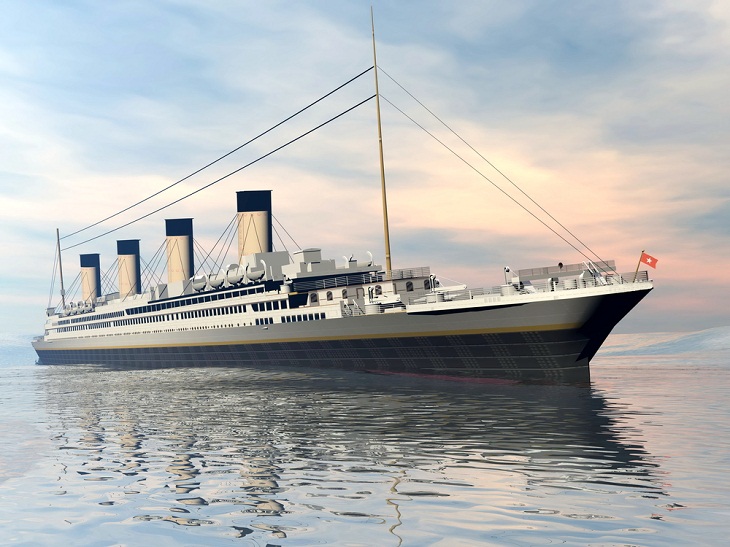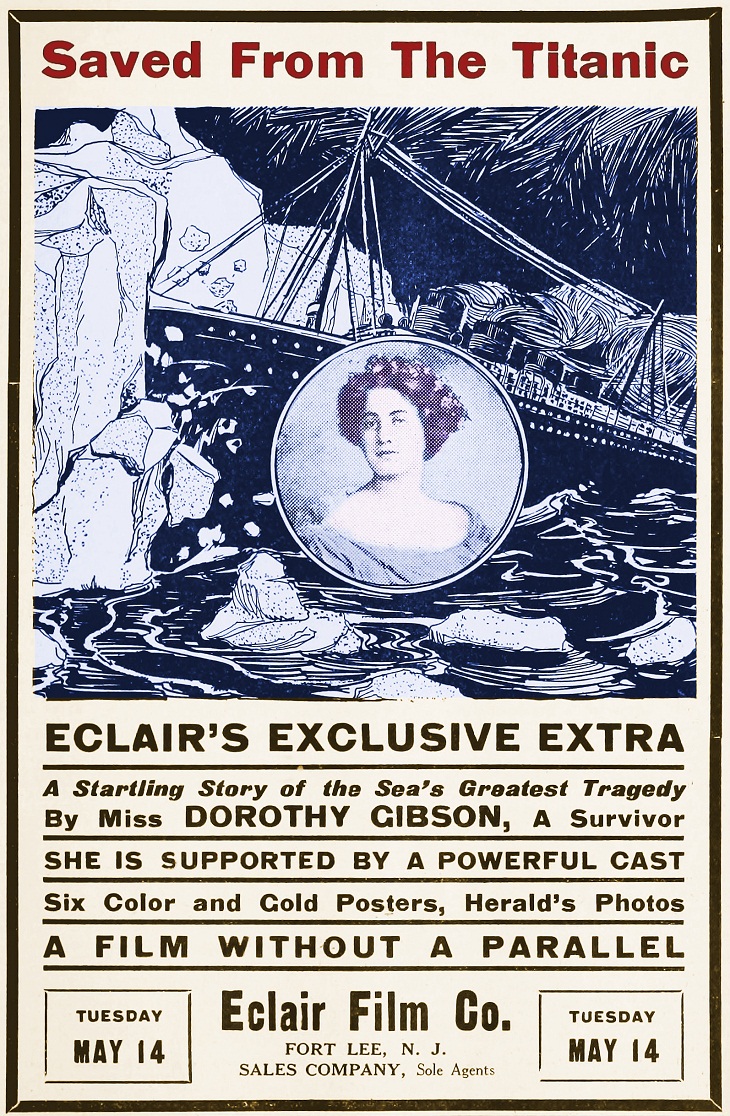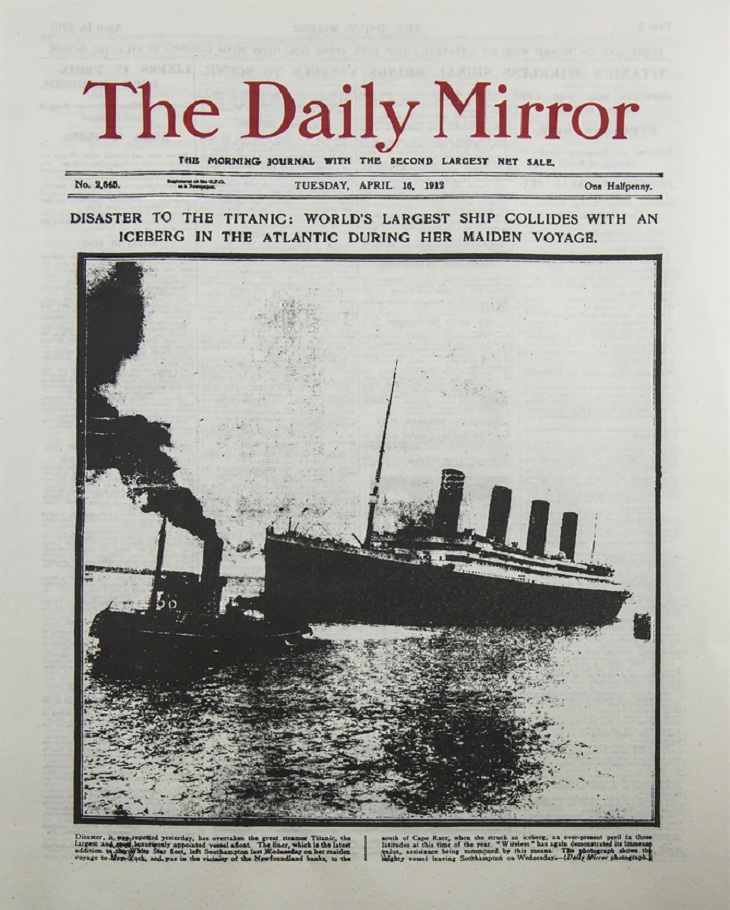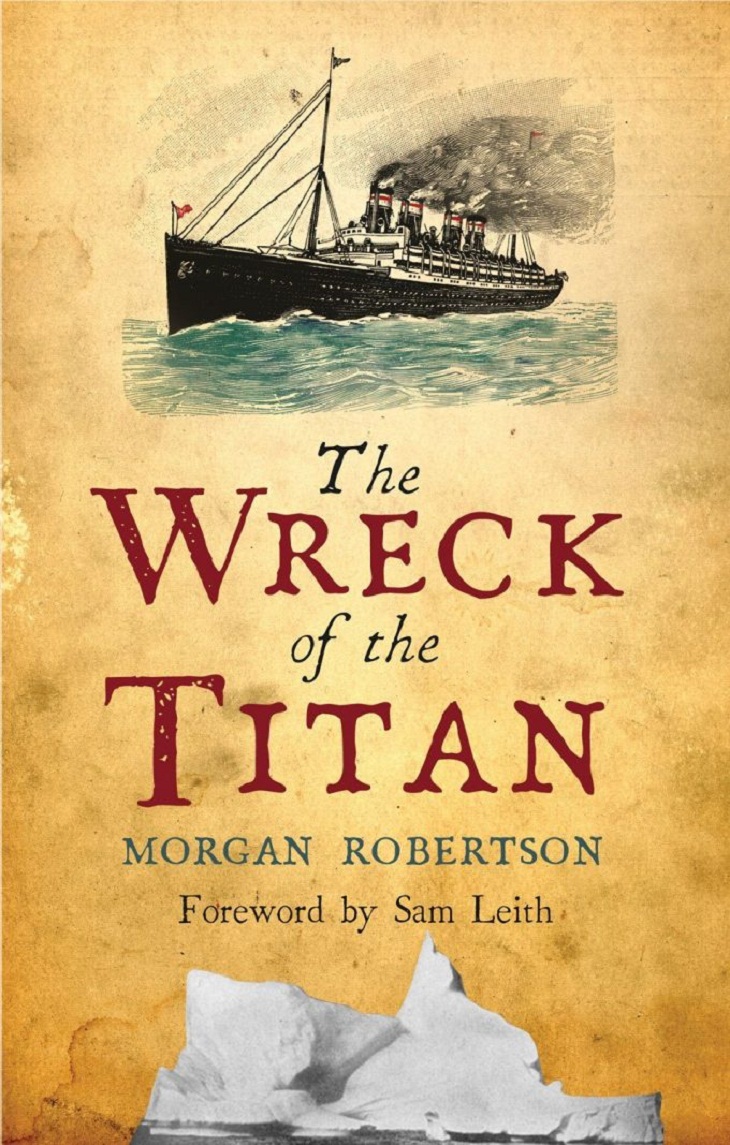


Image source: Wikimedia Commons
The first movie about the Titanic disaster, Saved from the Titanic, premiered on May 14, 1912, exactly a month after the disaster. The silent film starred actress Dorothy Gibson, who actually survived the disaster in real life. She wore the same clothes in the film as she did on the fateful night. Although some critics praised her performance, others argued it was too soon to capitalize on the disaster. Unfortunately, all prints of Saved from the Titanic were lost, as they were destroyed by a studio fire in 1914.
The final living survivor of the Titanic passed away in 2009. Millvina Dean, the youngest passenger on the ill-fated voyage at just two months old, left this world at the age of 97. Though she was a third-class passenger, she, along with her mother and brother, managed to escape on a lifeboat while her father remained on board. In a heartwarming gesture, Titanic director James Cameron, along with stars Kate Winslet and Leonardo DiCaprio, came together to support her nursing home expenses before her passing. Another survivor, Lillian Asplund, who was five years old during the tragic event, passed away in 2006 at the age of 99.
Related: Six Incredible Stories of People Who Survived the Titanic
After years of being lost, the shipwreck was eventually rediscovered in 1985, which was a significant moment. Unfortunately, Halomonas titanicae, a corrosive bacteria, is steadily eating the vessel's wreckage, and experts believe that it will degrade completely within a decade.

The notorious iceberg came into view just 37 seconds before crashing into the ship. As the Titanic moved from warmer to cooler seas, experts believe that a natural phenomenon known as thermal inversion concealed the ice. Thermal inversion happens when cold air traps behind warmer layers, perhaps distorting light and producing the illusion of a bright horizon while concealing the iceberg behind it. Furthermore, due to the conditions, there would have been no fog, giving the Titanic crew the impression that the water was truly clear.
The Titanic, along with its sister ships, the Olympic and Britannic, were luxury cruise ships built by the Harland & Wolff shipyard for the White Star Line to dominate the transatlantic passenger shipping industry with their size and opulence. While the Olympic enjoyed a lengthy service before being scrapped, both the Titanic and Britannic met tragic fates. Interestingly, Violet Jessop, a nurse, miraculously survived the sinking of both ships, first aboard the Titanic and later the Britannic. Regarding the latter, she said that the reason she survived was because of her thick hair, having been pulled beneath the keel of the Britannic as it sank off the coast of Greece.
While the sinking of the Titanic shook the world, Southampton bore the brunt of the tragedy. The city's streets were filled with grief-stricken residents as the news unfolded. For nearly a thousand families, the disaster meant agonizing uncertainty, with many relying on the crew members as their main source of income. The profound loss was starkly evident in places like the Northam school, where half the students struggled with the absence of their fathers, lost at sea.
During World War II, the Nazis planned to humiliate Britain by creating a movie about the sinking of the Titanic, known as The Nazi Titanic. The script was written by German screenwriter Harald Bratt, and Nazi propaganda minister Joseph Goebbels was responsible for bringing the propaganda movie to reality. It was the most expensive film ever made at the time, and it depicted British capitalists as greedy and careless, leading to the tragedy. The director of the movie requested a full-size ocean liner, the Cap Arcona, provided by the Nazis. Tragically, the Cap Arcona was sunk by RAF Typhoon Fighter Bombers towards the end of the war.
The sole female survivor of the ship's sinking was Rhoda Mary Abbott. She steadfastly remained on the deck until the ship's last moments, accompanied by her two sons, who, along with her, were engulfed by the sea as the ship went down. Sadly, her sons were lost to the ocean's fury, but Abbott was later rescued by a lifeboat, which was then picked up by the Carpathia.
Related: 8 Incredible Historical Predictions that Actually Came True

The Daily Mail's coverage of the Titanic's demise on April 16th had an obvious inaccuracy. It falsely claimed that no lives had been lost, even suggesting that another vessel, the Virginian, was towing the Titanic to Halifax. The article boldly reported, "She sank at 2:20 in the afternoon (7:20 in the afternoon)." "No lives were lost."
Meanwhile, the Reno Evening Gazette said that "passengers are safe." The Belfast Telegraph claimed "no danger of loss of life." Only later did the publications realize the extent of their error and begin to report the tragedy's human toll accurately.

Did you know that more than a decade before the Titanic's sinking, a writer had already depicted a similar catastrophe? In 1898, Morgan Robertson penned Futility, Or The Wreck of the Titan, where the protagonist, John Rowland, finds employment on the Titan, the largest vessel of its time. Interestingly, the name of the ship bore a striking resemblance to the actual Titanic and was touted as "unsinkable" and a "marvel of human achievement" in the novella. The most astounding thing about the story is that it describes the Titan colliding with an iceberg, which is eerily similar to the fate of the Titanic, despite being written fourteen years before it took place.